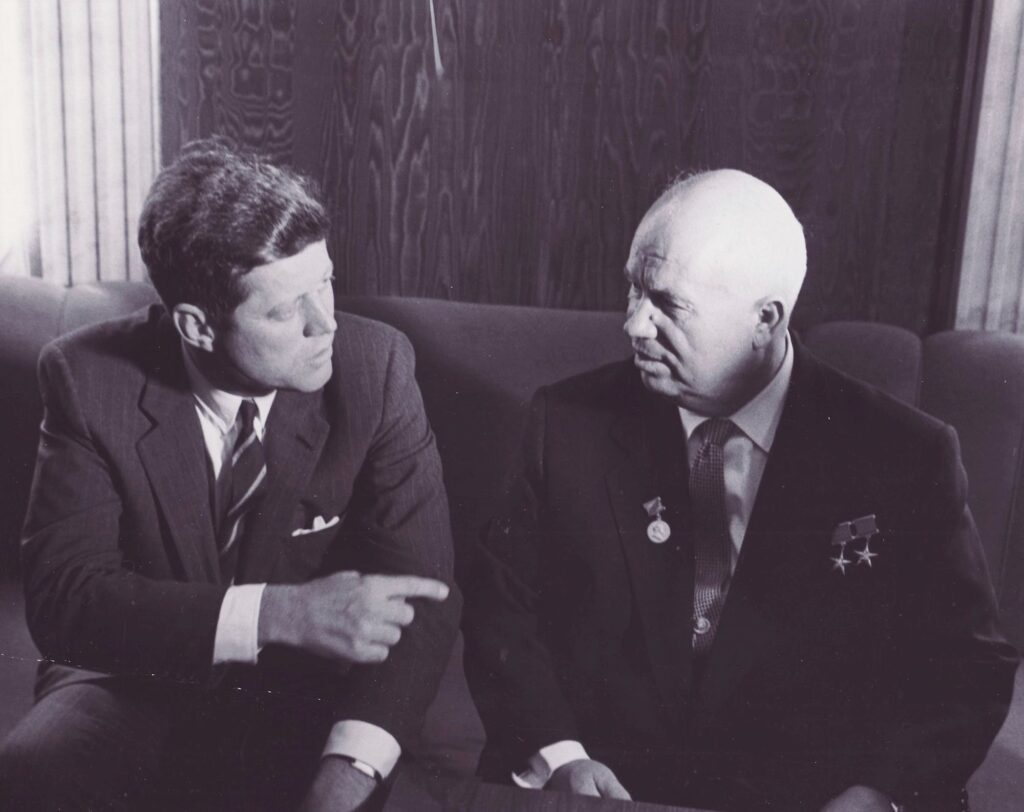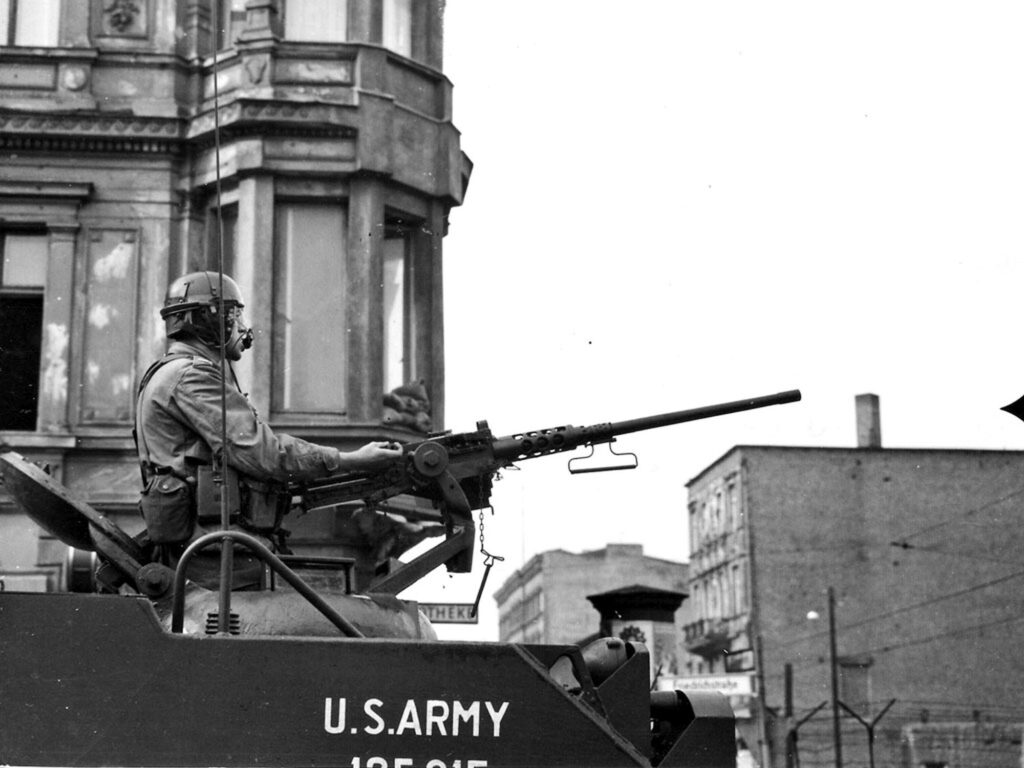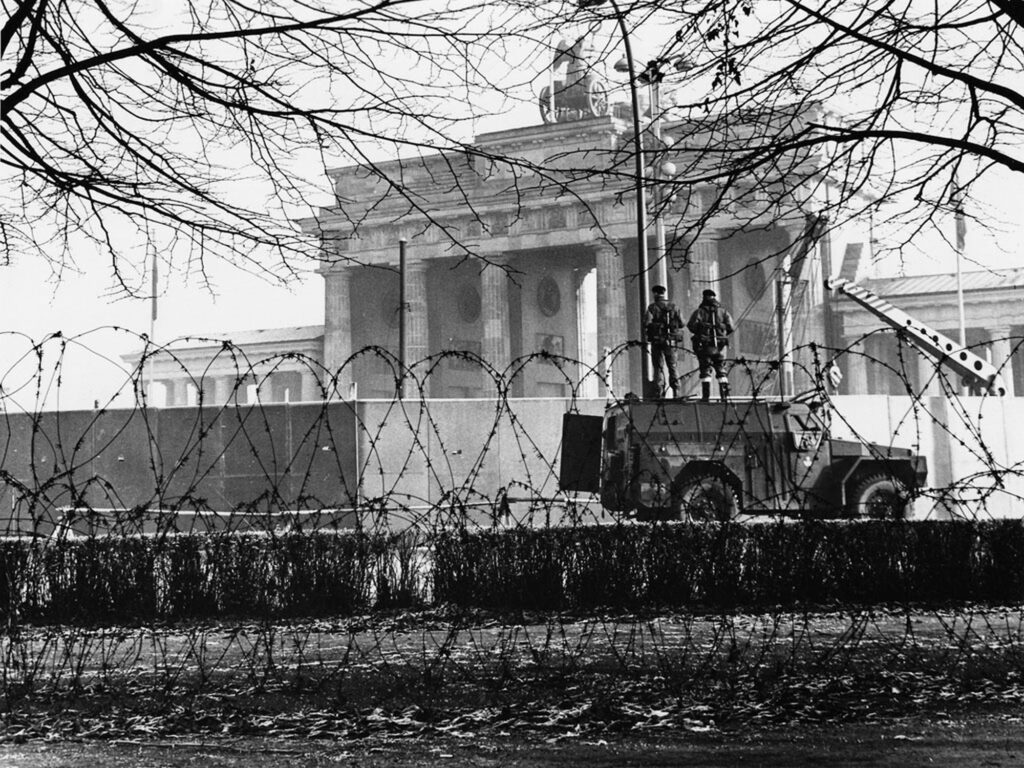The Soviet blockade of Berlin that began in 1948 led to the first major conflict between the victorious powers. The USA, Great Britain, and France resolved, however, not to abandon West Berlin. Up to the summer of 1949 they used the Berlin Airlift to supply the population with the necessities. Just one decade later Berlin was again the scene of a Cold War crisis.
The Soviet ultimatum on Berlin
The impetus for the renewed crisis was an ultimatum issued by Soviet premier and Communist Party leader Nikita S. Khrushchev, which was conveyed to the Western powers on November 27, 1958. In it, he unilaterally revoked the international order that had emerged since the end of World War II.
According to his plan, the Western powers would withdraw from Berlin within six months and their sectors would be transformed into a free, demilitarized city. Khrushchev threatened to sign a separate peace treaty with the GDR including the transfer of Soviet control rights to Berlin, among them access routes to the city. Since they did not recognize the East German state, the Western powers would have regarded this act as a violation of international law.
Khrushchev kept his true aims to himself. He wanted not just to strengthen the GDR, but also and above all to shake the credibility of the leading Western power, the USA, and thus split NATO as a defensive alliance.
Western reactions and the worsening crisis
The Western capitals were by no means unanimous in their reactions to the ultimatum. They were clear on one point, though: withdrawing their troops from West Berlin was out of the question. The Western powers also insisted on their right of free access to Berlin. U.S. President John F. Kennedy affirmed this stance in his “Three Essentials” of July 1961. This created a stalemate. Moscow and Washington threatened each other with war.
Until this escalation, East and West had at least maintained negotiations. After the Geneva conference of foreign ministers (1959), which ended without a result, and the failure of the Paris four-power summit (1960), the Berlin crisis reached its nadir with the American-Soviet summit meeting in Vienna (1961).

The Vienna summit represented a turning point for the Soviet Union in regard to the GDR: the political and economic crisis in the GDR had intensified in the meantime to such an extent that the GDR leadership was increasingly pressuring Moscow to seal off East Berlin. The last bolthole to the West had to be closed. In light of the dramatic rise in the number of refugees, in July 1961 Khrushchev agreed to the building of the Berlin Wall, which he had originally rejected.
The operation was organized under the leadership of the Red Army. On August 13, 1961 the GDR authorities began to set up barbed wire barriers in Berlin, and cut off the city’s vital arteries from one day to the next. The Western powers were unwilling to fight a war over Berlin and responded with restraint. Because the population was outraged and disappointed, the USA quickly took visible action, sending an additional brigade to strengthen its garrison. At the same time, Vice President Lyndon B. Johnson made a visit to West Berlin. Kennedy also sent the former military governor Lucius D. Clay as his special representative. Armed patrols were set up along the Wall.
The situation in Berlin heated up in October 1961. The highest-ranking U.S. diplomat in Berlin tried to cross at Checkpoint Charlie when GDR border guards demanded to see his passport. U.S. tanks took up position on Clay’s orders: the Allied right to enter East Berlin without such checks would be defended by force, if necessary.
Soviet tanks then rolled up on the other side. The USSR apparently stood by the city’s four-power status—a signal to the West that they did not wish the conflict to escalate. The tanks faced off for 16 hours. The “tank standoff” was ultimately defused via the secret channels that Washington and Moscow would also use one year later during the Cuban Missile Crisis.


The threat of atomic war and emergency planning for West Berlin
The threat of nuclear war hung over the second Berlin crisis. The Soviet Union became a nuclear power in the late 1950s, which lent particular weight to its ultimatum regarding Berlin. While its nuclear arsenal was only partially operational, the strong effect in Paris, London, and Washington of the news and pictures of Soviet atomic tests proved decisive
Given the scenario of intimidation represented by the GDR’s National People’s Army and the Red Army, the Western military presence in West Berlin had mainly symbolic significance. The unequal balance of power gave rise to the military mission of the Western Allied garrisons: when engaged in street and house-to-house fighting, to hold off the attacker until their governments had decided on the appropriate military response.
The “Live Oak” military planning staff was set up within NATO in 1959 to prevent escalation during access to Berlin. The Western powers were especially vulnerable with regard to road, rail, and air traffic between West Germany and West Berlin. That was also precisely what had sparked the first Berlin crisis of 1948. “Live Oak” developed conflict scenarios and proposed countermeasures including political and economic sanctions as well as military operations that went as far as deploying nuclear weapons.
Faced with the risk of atomic war, social resistance arose in the Federal Republic. The “Fight Atomic Death” campaign and the Easter March movement had their roots in this second Berlin crisis.


